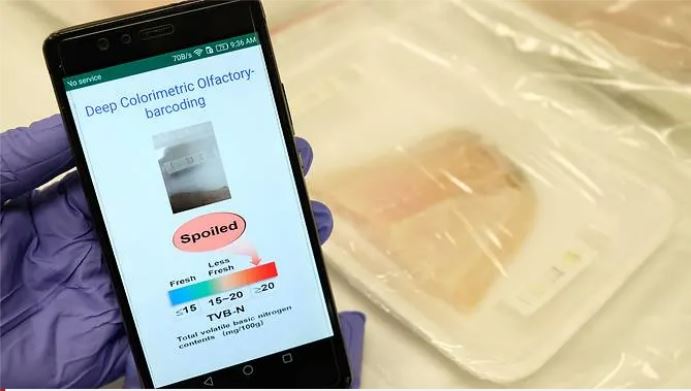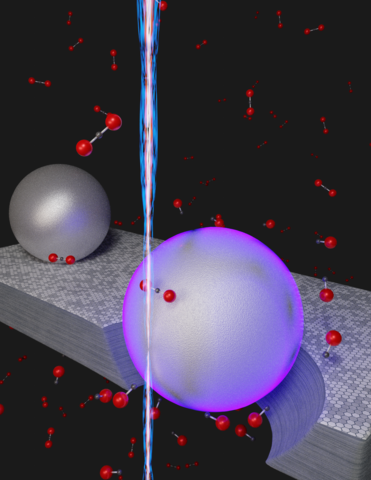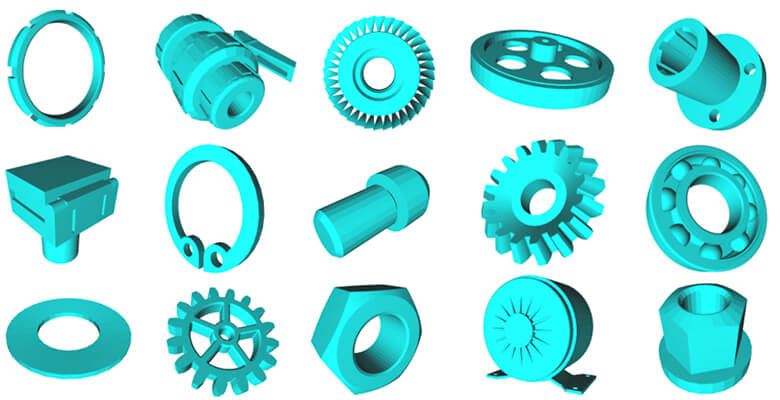(International research team led by NTU Singapore develops AI-powered ‘electronic nose’ to sniff out meat freshness)
2020/11/10 シンガポール・南洋(ナンヤン)理工大学(NTU)

・ NTU が、食肉の鮮度をリアルタイムに高精度で確認する人工嗅覚システム、「電子ノーズ(enose)」を開発。
・ 同 e-nose は、腐敗した食肉が放出するガスに反応して経時的に色を変える「バーコード」と、それを読み取る「リーダー」より構成。リーダーは、バーコードが示す色の組合せを深層畳み込みニューラルネットワークの AI アルゴリズムで理解する。ポータブルなスマートフォンアプリで 30 秒以内に結果が得られる。
・ 腐敗した食肉が放出するガスが哺乳類の鼻でレセプターに結合し、その信号が脳に送信され、脳がこれらの反応を収集・整理してパターン化することで食肉の腐敗臭を特定する、哺乳類の鼻の働きを模倣する。
・ バーコードの 20 本の各バーはセルロース誘導体に埋め込まれたキトサン(天然の糖)に色素を充填したもので、レセプターとして機能する。ガス濃度の種類により色を変え、食肉の鮮度の「匂いの指紋」となる独特な色の組合せを提示する。
・ 例えば、バーコードの一番目のバーは弱酸性の黄色の色素を含有し、腐敗した食肉が放出する窒素を含む化合物(バイオアミン)に反応して青色に変化する。腐敗の程度で異なるガス濃度に対応し、変化する色の濃度も変わる。
・ 標準的な透明 PVC フィルムに包んで 4℃で 5 日間保管した魚のパッケージで検出されるアンモニアと 2 種類のバイオアミンの量を測定し、食肉の鮮度を定める国際規格をベースに 3 段階の鮮度の分類システムを作製した。PVC フィルムの内側にバーコードを貼り付け、パッケージ内の魚の鮮度のモニタリングも実施中。
・ 鮮度の各カテゴリーに対応した「匂いの指紋」のパターンを特定するバーコードの画像で深層畳み込みニューラルネットワークを訓練した。市販のパック詰めの鶏肉、魚、牛肉のサンプルによる試験の結果、98.5%超の精度で予測(同システムのバーコードに類似したセンサーの反応を計測する一般的なアルゴリズムでは 61.7%)。完全な腐敗では 100%、鮮度高から中程度では 96~99%の精度を確認。
・ 同 e-nose は、消費可能な食品の廃棄を回避することで消費者の金銭的な節約と共に環境負荷の低減にも貢献。センサーのバーコードは生分解性で毒性が無く、食品サプライチェーン全体で食品鮮度の確保に安全に利用できる。
・ 同技術は特許出願済み。シンガポールのアグリビジネス企業と共同で他の食品への応用に向けた研究を進めている。
URL: https://media.ntu.edu.sg/NewsReleases/Pages/newsdetail.aspx?news=4dd13220-4646-
48be-9e69-fa858748fb4f
<NEDO海外技術情報より>
(関連情報)
Advanced Materials 掲載論文(フルテキスト)
Portable Food-Freshness Prediction Platform Based on Colorimetric Barcode Combinatorics and Deep Convolutional Neural Networks
URL: https://www3.ntu.edu.sg/CorpComms2/Research%20Papers/E-nose.pdf
Abstract
Artificial scent screening systems (known as electronic noses, E-noses) have been researched extensively. A portable, automatic, and accurate, real-time E-nose requires both robust cross-reactive sensing and fingerprint pattern recognition. Few E-noses have been commercialized because they suffer from either sensing or pattern-recognition issues. Here, cross-reactive colorimetric barcode combinatorics and deep convolutional neural networks (DCNNs) are combined to form a system for monitoring meat freshness that concurrently provides scent fingerprint and fingerprint recognition.
The barcodes—comprising 20 different types of porous nanocomposites of chitosan, dye, and cellulose acetate—form scent fingerprints that are identifiable by DCNN. A fully supervised DCNN trained using 3475 labeled barcode images predicts meat freshness with an overall accuracy of 98.5%. Incorporating DCNN into a smartphone application forms a simple platform for rapid barcode scanning and identification of food freshness in real time. The system is fast, accurate, and non-destructive, enabling consumers and all stakeholders in the food supply chain to monitor food freshness.



